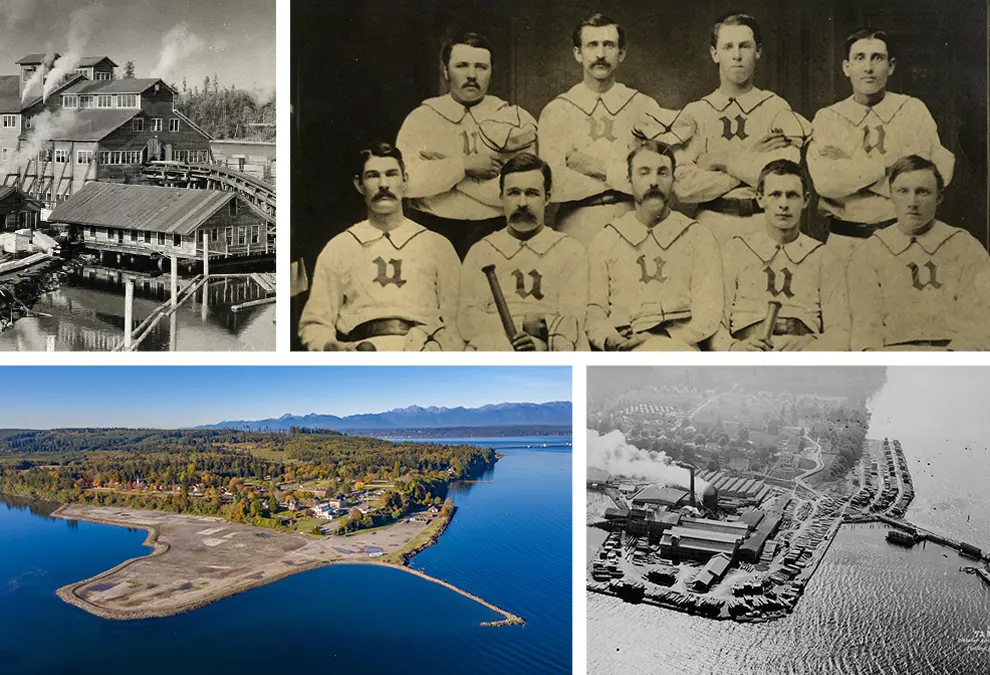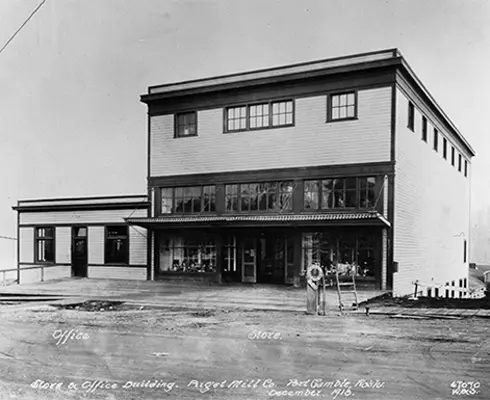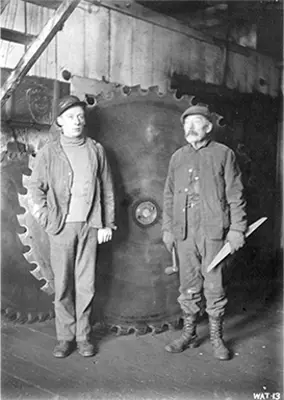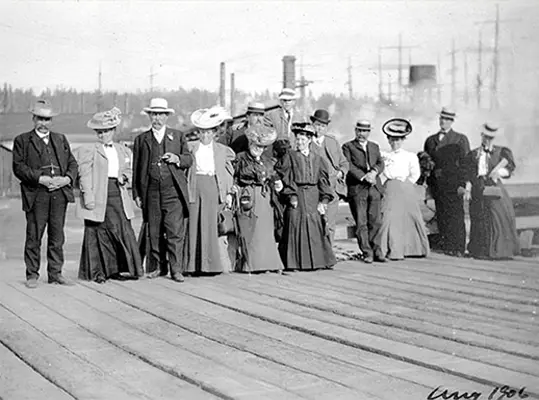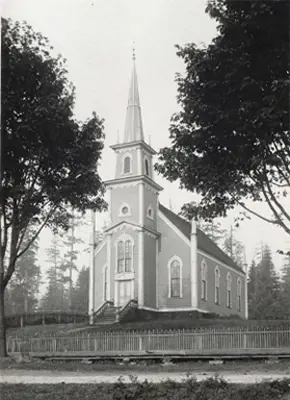The sawmill that William Talbot and Andrew Pope founded on Gamble Bay in 1853 remained in operation until December 1995. It was the longest continually operating mill in the United States at that time. Now, the mill is gone, but the little town that grew up around it gives visitors a chance to see how early lumbering communities looked and functioned. Fewer than 1,000 settlers lived on the Sound in 1853, and most of them were busy felling enormous trees, or working in mills that sawed the logs into lumber for the San Francisco market. These mills were built close to the water for easy transport, and towns were often built on the bluffs above. These early communities sometimes closely resembled the New England or Midwest Villages where the settlers had been born. Steepled churches and gabled clapboard houses with steep roofs and picket fences were common, but these simple buildings were soon replaced with more updated and stylish structures when the railroad tied the region to the East in the 1880’s. Change moved slowly in Port Gamble because it was a company town. Some early buildings remained in use, and Pope & Talbot continued to construct many structures in a modified New England style.
Pope & Talbot was a leader in both lumbering and shipping. Prudent business practices helped the company weather severe economic downturns that bankrupted many of its competitors. It shipped Port Gamble lumber not only across America but to Australia, Peru, England, Hawaii, and other points around the globe. Pope & Talbot burned sawdust to power a flour mill. Settlers throughout the region shopped at the town’s general store, a particularly welcome source of income in the early years for Pope & Talbot.
On November 30, 1995, the mill whistle blew for the last time in Port Gamble. Pope & Talbot made the decision to close the mill; until its closure, the mill was the oldest continuous operating mill in North America.
In 1996 new life was brought into the town of Port Gamble. This is the long-term commitment that the founding fathers made to the ten men from Maine who trusted them enough to make that first journey. Today Port Gamble is still a company town.
In 2020, Rayonier acquired all holdings of what used to be Pope Resources and now owns and manages the town of Port Gamble under their real estate subsidiaries, Raydient and OPG Port Gamble LLC.

